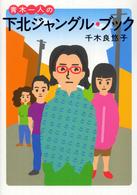Full Description
This user-friendly book is designed for language teachers of all levels and languages who seek to inform their classroom practices with current research findings on second language acquisition. Ideal for courses on second language learning and teaching, teacher reading groups, and professional development workshops, each chapter begins with a story of a real teaching scenario and a concise summary of what cutting-edge language teaching research says (and what it does not say) about the topic. Throughout the twenty-one chapters, the authors connect language research to the classroom, challenge misunderstandings around language pedagogy, and provide solutions. Each chapter concludes with classroom activities, and instructional strategies that can be used immediately in professional development workshops or in the classroom. Additional resources are available online to supplement the activities found in the book. Applicable across all languages and levels, this book is suitable for teachers of diverse backgrounds teaching in diverse contexts.
Contents
Preface; Acknowledgments; Note on Terminology; Pre-Reading Self-Assessment; Part I. Teacher and Student Talk; 1. How do I get my learners to start and stay talking in the second language?; 2. How do I maximize input in the second language?; 3. Why, when, and how (much) should I correct my learners?; 4. How do I promote peer interaction in the classroom?; 5. What kinds of learning strategies can I teach my learners?; Part II: Differentiation; 6. How does language learner identity influence the language learning experience?; 7. How do I best support neurodiverse language learners?; 8. How do learners' motivation and anxiety levels impact their language learning experience?; 9. How can aptitude be leveraged for language learning?; 10. It's much harder to learn (and teach) my language compared to other languages, and it takes much longer. How can I compensate for these difficulties with my learners?; Part III. Teaching the Skills; 11. How or when should I teach grammar?; 12. Is there a best way to teach pronunciation?; 13. How can I incorporate literacy skills in the target language?; 14. When or how should I teach vocabulary?; 15. What are some strategies for teaching learners about politeness, register, or other pragmatic skills in the second language?; Part IV. Lesson and Unit Planning; 16. What are some of the most popular language teaching methods?; 17. Content, form, and activities: how do I select activities, tasks, and projects?; 18. Menus and maps: how can I make my classroom more authentic in terms of materials and practices?; 19. How could/should I best use technology in the language classroom?; 20. How do I assess language learning?; 21. How can I make the most of professional development opportunities for language teachers?; Glossary; References and resources; Index








